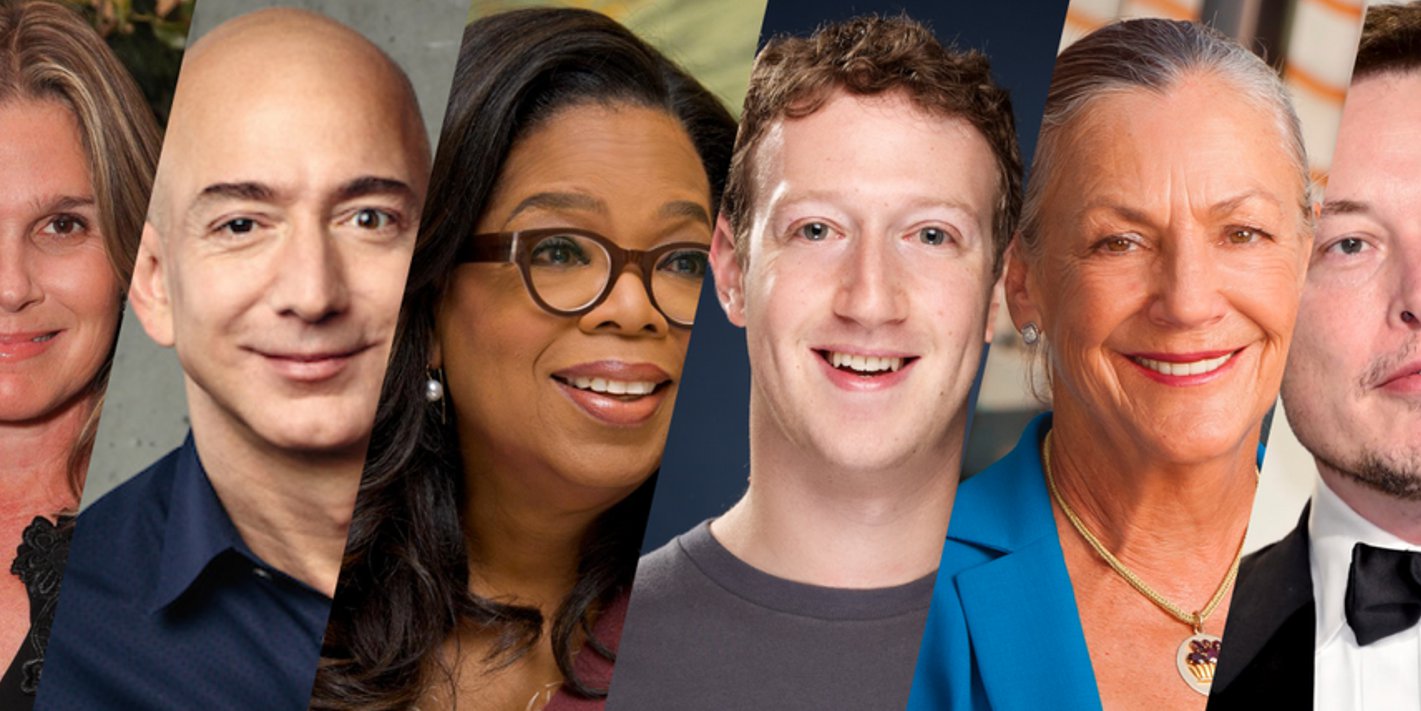Forbes 400 2017
Meet The Richest People In America
It was another record year for the wealthiest people in America … as the price of admission to the country’s most exclusive club jumped nearly 18%. The minimum net worth to make The Forbes 400 list of richest Americans is now a record $2 billion, up from $1.7 billion a year ago. The group’s total net worth climbed to $2.7 trillion, up from $2.4 trillion, and the average net worth rose to $6.7 billion, up from $6 billion.
Вернуться на Главную

Even at these new heights, entrepreneurs are breaking into the ranks for the first time as they mint fortunes in everything from telecom to booze to fishing. There were 22 newcomers, 14 of whom are self-made entrepreneurs. Among the most notable: Arizona iced tea cofounder Don Vultaggio; Netflix cofounder Reed Hastings; Tito Beveridge, the creator of Tito’s Handmade Vodka; Chuck Bundrant, whose Trident Seafoods sells his fish to places like McDonald’s and Burger King; and Rocco Commisso, founder of cable TV and broadband firm Mediacom and owner of the New York Cosmos, a soccer club based in Brooklyn.
Every person in the top 10 got at least $1 billion richer in the past year. Number one for the 24thconsecutive year is Bill Gates, who is now worth $89 billion, up $8 billion from a year ago. Amazon’s Jeff Bezos, whose fortune rose $14.5 billion in a year, retains the number two spot for the second consecutive year with a net worth of $81.5 billion, while Warren Buffett holds onto the number 3 spot. His net worth increased by $12.5 billion, despite giving away more than $3 billion of Berkshire-Hathaway stock in July. The biggest gainer (in dollar terms) is Facebook’s Mark Zuckerberg. His fortune jumped $15.5 billion, but in a crazy year like this one, it’s only good enough for him to hold onto his ranking as fourth richest.
Gainers (there were 289) since last year’s list outnumbered losers (just 51) by more than five to one. A strong stock market was the main reason for this record-breaking year. The S&P 500, for instance, was up roughly 17% in the 12 months since the 2016 Forbes 400 list.
The most notable loser was President Donald Trump, whose fortune fell $600 million to $3.1 billion. A tough New York real estate market, particularly for retail locations; a costly lawsuit and an expensive presidential campaign all contributed to the declining fortune of the 45th president.
READ: More coverage of the Forbes 400
A record 169 billionaires were too poor to make the cut, including well-known figures such as activist investor Nelson Peltz and Facebook’s Sheryl Sandberg. Twenty-six members of the 2016 class fell out of the ranks. Among the most notable dropouts is Under Armour’s Kevin Plank, whose fortune fell to $1.7 billion, down from $3 billion, as the stock price of his sports apparel company unraveled by 60%. Commerce Secretary Wilbur Ross also fell out of the ranks, after filing disclosure forms showing a net worth of less than $1 billion. He told Forbes that he shifted billions to trusts for his family members, but did not provide evidence of having done so.
Our estimates are a snapshot of the fortunes of America’s wealthiest people using stock prices from September 22. Some of The Forbes 400 become richer or poorer within weeks, even days, of publication. We track these changes at forbes.com/forbes-400. That’s where you’ll find more information on list members, as well as photos, videos, and coverage of these influential billionaires.
Methodology. This is the 36th year of the flagship Forbes 400. Though we’ve been at it a long time, it’s always a challenge. Our reporters dig deep. This year we started with a list of more than 600 individuals considered strong candidates. When possible, we met with Forbes 400 members and candidates in person or spoke with them by phone. We also interviewed their employees, handlers, rivals, peers and attorneys. Uncovering their fortunes required us to pore over thousands of SEC documents, court records, probate records and Web and print stories. We took into account all types of assets: stakes in public and private companies, real estate, art, yachts, planes, ranches, vineyards, jewelry, car collections and more.
We factored in debt. Of course, we don’t pretend to know what is listed on each billionaire’s private balance sheet, although some candidates did provide paperwork to that effect. Some billionaires presiding over private companies were happy to share their financial figures, but others were less forthcoming. To value the private businesses, we couple revenue or profit estimates with prevailing price-to-revenue or price-to-earnings ratios for similar public companies.
We didn’t include dispersed family fortunes. We did include …
Acknowledgments
Special Thanks to: LW Hospitality Advisors; Orbis by Bureau Van Dijk; Real Capital Analytics; CoStar Group; Pitchbook Data; and Trepp; Susan Anderson, FBR Capital Markets & Co; Jim Barrett, C.L. King & Associates; Beverage Marketing Corporation; Michael Braunholtz, Prestige Property Group; David Burgher, Briggs Freeman Sotheby’s International Realty; Jordan Chalfin, CreditSights; Lisa Clive, Sanford C. Bernstein; Aurora D’Amico, National Center of Education Statistics; Euromonitor International; FactSet; Ronald M. Gold, GoldAppraisal; Alexandra Kaufman, App Annie; Daniel Lesser, LW Hospitality Advisors; Mark Lowham, Sotheby’s International Realty; Kieran Maguire, University of Liverpool; Jonathan Miller, Miller Samuel Inc.; Morningstar; Craig Morris, Aspen Snowmass Sotheby’s International Realty; David Nittler, Nittler Appraisal; Michael Pachter, Wedbush Securities; Robert Sammons, Cushman & Wakefield; Eric Schmidt, Beverage Marketing Corp.; Nick Setyan, Wedbush Securities; John Shaffer, Colliers International; Simeon A. Siegel, Nomura; Tom Snyder, U.S. Department of Education; S&P Global Market Intelligence; Irwin Stein; Alton Stump, Longbow Research; San Dell Asset Management; Brian M. Vaccaro, Raymond James & Associates.



































